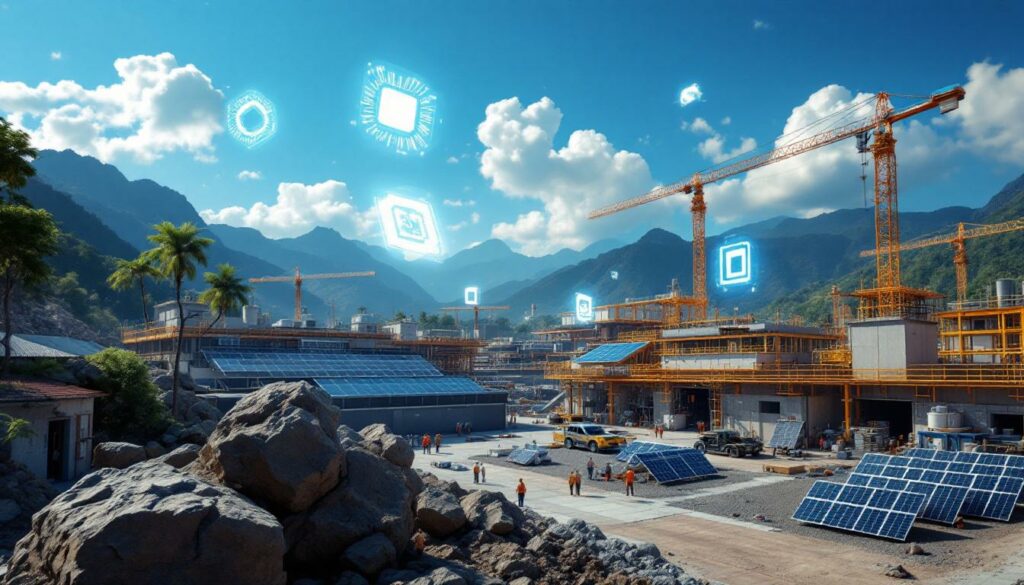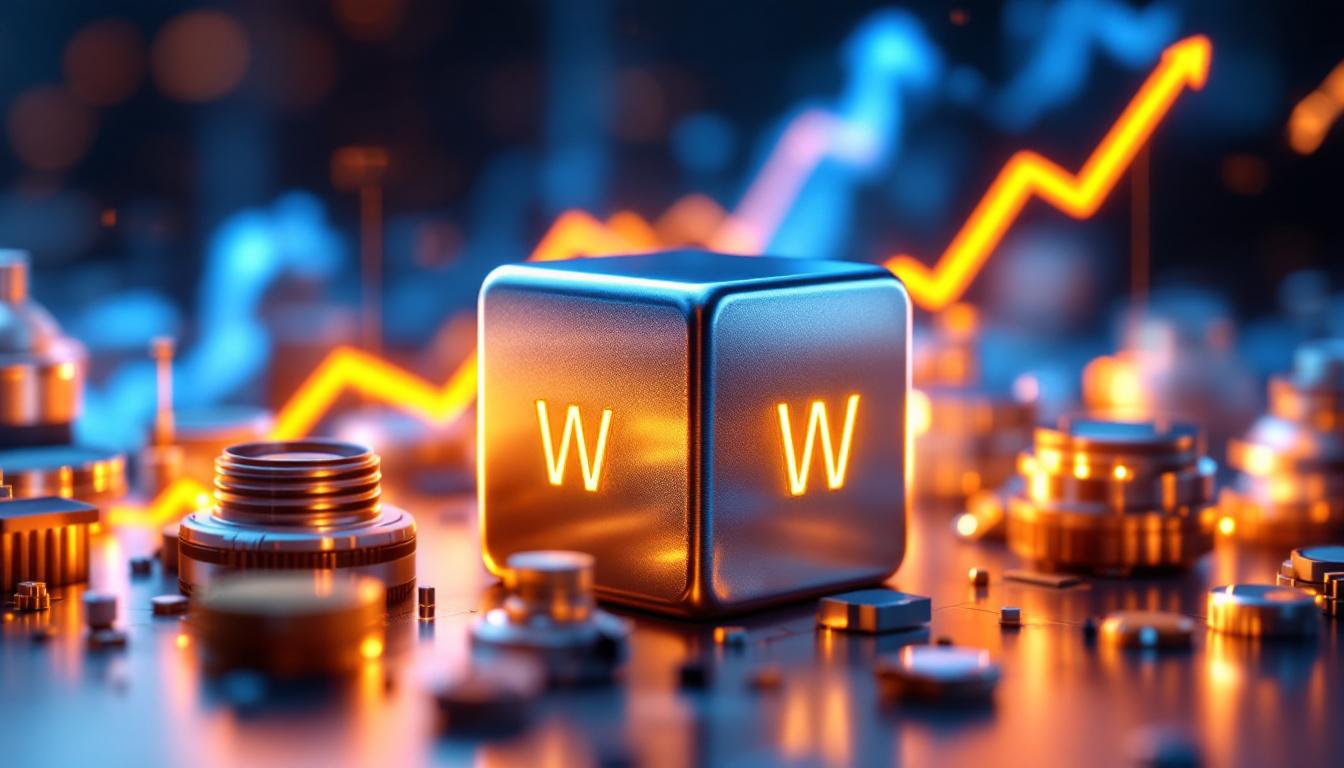What is CATL's Indonesian Battery Plant Project?
Contemporary Amperex Technology Co. Limited (CATL), the world's largest battery manufacturer, has officially broken ground on a massive battery cell factory in Indonesia, marking a significant milestone in the global battery supply chain evolution. The project, commencing construction in June 2025, represents a strategic expansion into Southeast Asia for the Chinese battery giant.
Located in Karawang, West Java, this manufacturing facility aims to begin operations by the end of 2026 with an initial production capacity of 6.9 gigawatt-hours (GWh). According to reports from Bloomberg, the plant will eventually expand to 15 GWh in its second phase of development.
Indonesian Energy Minister Bahlil Lahadalia highlighted the project's ambitious scope: "With the battery for solar modules, the total production capacity of this plant could reach up to 40 GWh," he stated during the groundbreaking ceremony, indicating ongoing discussions about further expansion opportunities beyond electric vehicle batteries.
This factory represents a critical component in Indonesia's strategy to develop a complete battery manufacturing ecosystem, leveraging the country's vast nickel reserves and strategic position in the global minerals market.
The Strategic Partnership Behind the Indonesian Plant
The battery manufacturing facility emerges from a carefully structured joint venture between CATL's subsidiary CBL International Development and Indonesia Battery Corporation (IBC), also known locally as Industri Baterai Indonesia (IBI). This partnership combines CATL's world-leading technical expertise with Indonesia's state-backed initiative to establish a complete battery supply chain.
IBC serves as the Indonesian government's primary vehicle for developing an integrated battery industry. As a state-owned enterprise, IBC coordinates activities across mining operations (through partnerships with companies like Antam), refining facilities, and manufacturing capabilities. This strategic alignment allows Indonesia to maintain significant control over its natural resources while attracting foreign expertise and investment.
The partnership structure follows a trend of similar arrangements in Indonesia's growing EV ecosystem. In 2024, Hyundai Motor Group and LG Energy Solution commissioned their own battery cell factory through a comparable joint venture structure, utilizing nickel resources secured through IBC's supply network.
Industry analysts note that CATL's partnership with IBC differs from its European ventures in that Indonesia maintains a higher equity stake, reflecting the country's leverage from its critical mineral resources. The exact equity distribution remains confidential, though government sources indicate a significant Indonesian ownership position.
The collaboration represents a win-win scenario: CATL gains preferential access to battery minerals and a strategic manufacturing location, while Indonesia secures advanced technology transfer and expertise in high-value manufacturing processes.
Key Project Specifications and Timeline
Production Capacity and Development Phases
The Indonesian battery plant will follow a phased development approach. The first phase targets an initial capacity of 6.9 GWh by the end of 2026, with plans to expand to 15 GWh shortly thereafter. As indicated by Energy Minister Bahlil Lahadalia, discussions continue regarding potential expansion to 40 GWh, which would include production lines for stationary storage batteries to support Indonesia's growing solar energy sector.
This gradual scaling approach allows CATL to establish manufacturing excellence while aligning capacity growth with market demand for both EVs and renewable energy storage solutions.
Facility Details
The Karawang facility will span an impressive 3,000 hectares (30 million square meters), making it one of the largest battery manufacturing complexes in Southeast Asia. The project encompasses not just production facilities but an entire industrial ecosystem.
According to BatteryIndustry.net's reporting, the development will create approximately 8,000 direct jobs ranging from engineering positions to manufacturing roles. Additionally, the project will drive the development of 18 key infrastructure initiatives, including:
- A multipurpose port facility for efficient import/export logistics
- Dedicated power generation and distribution systems
- Water treatment facilities
- Employee housing and transportation networks
- Technical training centers
Construction progress follows a strict timeline, with land preparation already completed as of June 2025. The structural framework is expected to be completed by Q2 2026, followed by equipment installation and commissioning phases leading to initial production by year-end.
How Will Indonesia Benefit from CATL's Investment?
Economic and Industrial Development
CATL's investment in Indonesia represents a transformative economic opportunity. The company has committed approximately €5.5 billion ($6 billion) across various projects spanning the entire battery value chain—from mining operations to recycling facilities.
The direct creation of 8,000 jobs at the Karawang facility represents just the beginning of the economic impact. Industry experts estimate an additional 24,000 indirect jobs throughout the supply chain, bringing significant employment benefits to the region. These positions span the skills spectrum, from technical engineering roles requiring advanced education to manufacturing positions accessible to the local workforce.
More significantly, the project accelerates Indonesia's industrial diversification beyond raw material exports. By moving up the value chain into advanced manufacturing, the country captures a significantly larger portion of the final product value. According to economic analysis from the Indonesian Ministry of Industry, processing nickel into battery components increases its value by approximately 500% compared to raw ore exports.
Strategic Positioning in the Global EV Supply Chain
By establishing this comprehensive battery manufacturing capability, Indonesia secures a pivotal position in the global electric vehicle supply chain. The country's strategy envisions vertical integration across five critical stages:
- Mining operations: Extracting nickel and other battery minerals
- Processing facilities: Refining raw materials into battery-grade lithium refinery inputs
- Cathode material production: Manufacturing critical battery components
- Cell manufacturing: Production of battery cells (CATL's current project)
- Recycling infrastructure: Developing battery recycling breakthrough capabilities
This end-to-end approach gives Indonesia unprecedented control over a critical technology supply chain at a time when geopolitical tensions have highlighted vulnerabilities in global manufacturing networks.
The export potential extends beyond the domestic market, with the Karawang facility expected to supply batteries to automakers throughout Southeast Asia and potentially global markets, further strengthening Indonesia's trade position.
Why Indonesia for CATL's Expansion?
Indonesia's Natural Resource Advantage
Indonesia possesses one of the world's largest nickel deposits, estimated to account for over 20% of global reserves according to industry experts. This natural endowment provides CATL with proximity to a critical battery material, reducing supply chain vulnerabilities and transportation costs.
Nickel serves as an essential component in lithium-ion battery cathodes, particularly in nickel-cobalt-manganese (NCM) and nickel-cobalt-aluminum (NCA) chemistries that dominate the electric vehicle market. High-nickel cathodes deliver superior energy density, enabling greater driving range—a key consideration for EV manufacturers and consumers alike.
Beyond nickel, Indonesia also possesses significant reserves of other battery minerals, including cobalt and manganese, creating opportunities for localized supply of multiple critical materials.
Government Initiatives Supporting Battery Manufacturing
The Indonesian government has implemented a comprehensive strategy to transform the country into an electric vehicle manufacturing hub. Their ambitious target of producing 600,000 EVs by 2030 demonstrates serious commitment to the sector.
Supporting policies include:
- Investment incentives: Tax holidays for qualified projects, reduced import duties on equipment, and streamlined permitting processes
- Local content requirements: Gradually increasing domestic content mandates to encourage supply chain development
- Export restrictions: Limitations on unprocessed nickel exports to encourage value-added processing within Indonesia
- Infrastructure development: Government funding for supporting infrastructure like ports, roads, and power generation
Through IBC, the government maintains active involvement in strategic partnerships, ensuring alignment with national development goals while providing resources and regulatory support to accelerate implementation.
What is the Broader Context of Indonesia's Battery Industry Development?
Other Major Battery Investments in Indonesia
CATL's Indonesian battery plant represents just one component of Indonesia's rapidly developing battery and electric vehicle ecosystem. Several major manufacturers have already established operations or announced plans:
- Hyundai and LG Energy Solution: Commissioned a 10 GWh battery cell factory in early 2024, with capacity to power approximately 150,000 electric vehicles annually
- Hyundai Motor Group: Established a vehicle manufacturing plant in 2022 with capacity for 250,000 units annually, including electric models
- BYD: Announced plans for a $1.3 billion electric vehicle production facility targeting completion in 2025
- Xpeng: Partnering with Indonesian companies to develop local EV production
- Vinfast: Vietnamese EV manufacturer advancing plans for Indonesian production facilities
These investments create a critical mass of battery and EV manufacturing capability, fostering the development of a comprehensive supplier ecosystem and technical workforce.
The Complete Value Chain Strategy
Indonesia's battery industry development follows a deliberate strategy to establish capabilities across the entire value chain:
-
Mining operations: The country has restricted raw nickel exports since 2020 to encourage domestic processing, leveraging its vast reserves.
-
Processing facilities: Multiple high-pressure acid leaching (HPAL) plants have been constructed to convert nickel ore into battery-grade materials.
-
Cathode material production: Facilities to produce nickel-cobalt-manganese cathode precursors are under development, including projects by Huayou Cobalt.
-
Cell manufacturing: CATL's current project, alongside the Hyundai-LG Energy Solution factory, establishes large-scale cell production.
-
Recycling infrastructure: Early-stage development of facilities to recover valuable materials from spent batteries, creating a circular economy.
This integrated approach differentiates Indonesia from many other battery-producing nations, potentially providing greater resilience against supply chain disruptions and capturing more value domestically.
What Challenges and Opportunities Lie Ahead?
Potential Hurdles for the Project
Despite its promising outlook, CATL's Indonesian battery plant faces several significant challenges:
Technical complexity presents a primary concern. Establishing high-quality battery manufacturing requires precise control of manufacturing processes, clean room environments, and specialized equipment. The development of a skilled local workforce capable of maintaining these exacting standards remains crucial yet challenging.
Market dynamics add another layer of uncertainty. Global electric vehicle demand faces short-term fluctuations despite long-term growth projections. Recent adjustments to EV plans by major automakers like Ford and Volkswagen highlight this volatility, potentially affecting battery demand.
Competition within Southeast Asia continues intensifying. Vietnam, Thailand, and Malaysia have all announced ambitious plans to attract battery and EV manufacturing, creating a competitive landscape for battery metals investment and export markets.
Infrastructure readiness represents a practical challenge. Despite government commitments, developing reliable electricity supply, transportation networks, and water management systems at the scale required remains a complex undertaking.
"Large-scale battery manufacturing demands extraordinary infrastructure reliability—power quality fluctuations measured in milliseconds can affect product quality," noted an industry expert familiar with CATL's operations (BatteryIndustry.net, June 2025).
Future Expansion Possibilities
Looking forward, several promising expansion opportunities exist:
Stationary storage production offers significant potential. As Indonesia pursues renewable energy goals, demand for grid-scale and distributed storage systems will grow substantially. Energy Minister Lahadalia specifically highlighted the potential for solar module batteries as part of the facility's future expansion.
Increased production capacity beyond the initial 15 GWh target remains under active discussion. The 40 GWh figure mentioned by government officials would place the facility among the world's largest battery plants.
Broader ecosystem development creates mutually reinforcing growth opportunities. As Indonesia's electric vehicle manufacturing sector expands, domestic battery demand will increase correspondingly, creating a virtuous cycle of industrial development.
How Does This Project Fit Into CATL's Global Strategy?
CATL's International Expansion Pattern
CATL's Indonesian investment represents a key element in the company's global manufacturing strategy, which follows several clear patterns:
Diversification of manufacturing locations reduces dependency on single-country production. Following trade tensions and supply chain disruptions, CATL has accelerated development of facilities outside China, including plants in Germany and Hungary alongside the Indonesian project.
Raw material security drives investment decisions. By establishing manufacturing presence near critical mineral sources, CATL secures preferential access to materials while reducing transportation costs and supply chain vulnerabilities.
Market access considerations influence facility locations. The Indonesian plant positions CATL to serve both the growing domestic market and broader Southeast Asian region, potentially including exports to Australia and other Asia-Pacific markets.
Strategic partnerships with governments and automotive manufacturers form a core element of CATL's approach. The collaboration with Indonesia's state-owned enterprises follows this established pattern while adapting to local requirements.
Comparison to Other CATL International Projects
The Indonesian facility differs from CATL's other international ventures in several important aspects:
Scale of investment: At approximately €5.5 billion across the value chain, CATL's Indonesian commitment exceeds its European investments, reflecting the strategic importance of the project.
Vertical integration: Unlike its European operations, which focus primarily on cell manufacturing, the Indonesian initiative encompasses a more comprehensive involvement across mining, processing, and manufacturing.
Government collaboration: The partnership with IBC represents a deeper level of government involvement than typical for CATL's other international projects, reflecting Indonesia's strategic control of critical minerals.
This comprehensive approach indicates CATL views Indonesia not merely as a manufacturing location but as a strategic partner in securing its long-term raw material supply and market position.
What Are the Environmental and Sustainability Implications?
Sustainability Considerations
The environmental impact of battery manufacturing receives increasing scrutiny, and the Indonesian project incorporates several important sustainability elements:
Resource utilization efficiency stands as a priority. Modern processing techniques employed at the facility aim to maximize nickel recovery while minimizing waste, addressing concerns about Indonesia's historically resource-intensive mining sector.
Processing standards represent a significant focus. The facility will implement environmentally responsible nickel processing methods, including advanced wastewater treatment and emissions control systems that exceed local requirements. This approach addresses criticism of earlier Indonesian nickel processing facilities with poor environmental performance.
Recycling integration creates opportunities for closed-loop material systems. CATL's investment includes development of battery recycling capabilities, potentially recovering up to 95% of critical materials from spent batteries and reducing the need for primary resource extraction.
Clean energy transition support extends beyond the batteries themselves. The facility includes plans for on-site renewable energy generation, potentially including solar installations that will utilize the same battery technology being manufactured.
While challenges remain, particularly regarding water management and historical concerns about mining practices in Indonesia, the project's comprehensive approach to sustainability represents a significant advancement over previous resource extraction models in the region.
FAQ: CATL's Indonesian Battery Plant
When will CATL's Indonesian battery plant begin production?
The facility is scheduled to commence operations by the end of 2026, starting with an initial production capacity of 6.9 GWh. Construction began in June 2025, with equipment installation expected to start in mid-2026 followed by commissioning and initial production runs.
What types of batteries will be produced at the Indonesian plant?
The plant will primarily manufacture lithium-ion battery cells for electric vehicles, focusing on high-nickel cathode chemistries that leverage Indonesia's natural resources. There are also plans to potentially expand into stationary storage batteries for solar applications, as indicated by Energy Minister Bahlil Lahadalia's comments about reaching 40 GWh total capacity.
How does this project impact global battery supply chains?
This facility represents a significant shift in battery manufacturing geography, strengthening Asia's position in the global supply chain while potentially reducing dependency on Chinese manufacturing. By establishing production closer to raw material sources, the project could enhance supply chain resilience while accelerating the transition to EVs transforming mining in Southeast Asian markets.
What is the significance of Indonesia's nickel reserves for battery production?
Indonesia possesses approximately 21% of the world's known nickel reserves, a critical component in lithium-ion battery cathodes. High-nickel cathode formulations, which deliver superior energy density and vehicle range, rely heavily on this material. By processing this nickel domestically into battery components through advanced direct lithium extraction techniques, Indonesia captures significantly more economic value than through raw ore exports while securing a central position in the growing electric vehicle supply chain.
Further Exploration:
Readers interested in learning more about global battery manufacturing developments can also explore related educational content available on Battery Industry's website, which offers perspectives on the evolving battery technology landscape and supply chain developments.
Interested in Identifying Potential High-Return Mining Discoveries Before the Market?
Discovery Alert's proprietary Discovery IQ model provides instant notifications on significant ASX mineral discoveries, transforming complex data into actionable investment insights. Explore why major mineral discoveries can lead to substantial returns by visiting Discovery Alert's dedicated discoveries page and position yourself ahead of the market.




